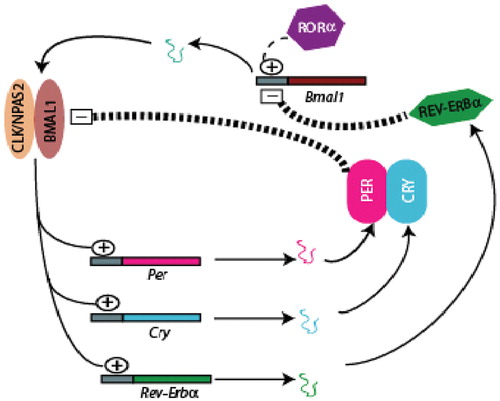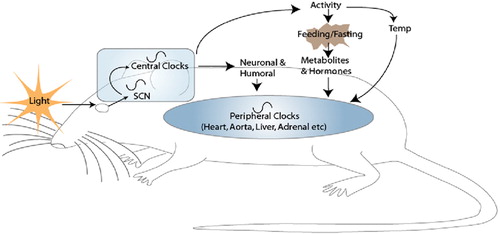Figures & data
Figure 1 The clockwork mechanism. The molecular circadian model is comprised of interlocking transcriptional and translational feedback loops. CLOCK:BMAL1 or NPAS2:BMAL1 heterodimerize at the beginning of the light cycle and activate gene transcription of perCitation1‐3, cryCitation1‐2 and rev‐erbα. PER/CRY complex can feedback on transcription factors and inhibit their expression—once nuclear levels of PER/CRY drop, the cycle is restarted. Oscillations of bmal1 are generated by opposing actions of REV‐ERBα and RORα, which inhibits or activates transcription. (Adapted with permission from Lakin‐Thomas Citation8.)

Figure 2 Central and peripheral oscillators. The retinohypothalamic tract relays photic information from the eye to the suprachiasmatic nucleus(SCN). The SCN alone or via central signaling generates a number of oscillatory neuronal and humoral signals (e.g. melatonin, catecholamines, glucocorticoids, vasopressin) which entrain peripheral clocks. Peripheral clocks can function independently, but require SCN driven signals to coordinate the appropriate phase of gene expression. Feeding and temperature, gated by SCN‐driven locomotor activity, can entrain peripheral oscillators. Restricted feeding of rodents uncouples oscillations in peripheral tissues from the SCN.
